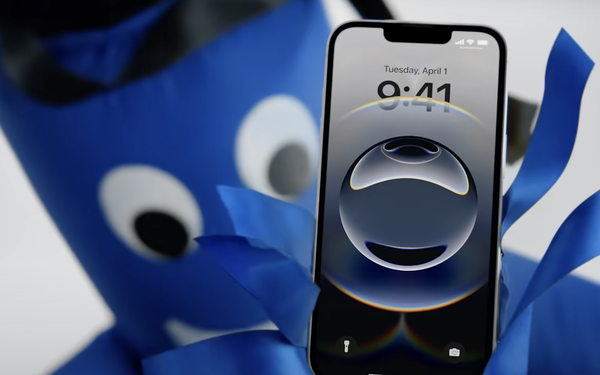research
Apple, Google, Microsoft Still Most Valuable Brands
- by Sarah Mahoney @mahoney_sarah, Yesterday

Apple holds its crown as the
world’s most valuable brand, growing 28% to $1.3 trillion in Kantar’s new BrandZ Global Top 100 ranking. Google followed, up 25% to $944.14 billion, and Microsoft rose 24% to $884.82
million. But the biggest takeaways from the report are further down the list, as emerging disruptors like ChatGPT and declines in alcohol, personal care, and food brands reshape the value
landscape.
Now in its 20th year, the BrandZ report measures brand value by combining consumer preference with financial performance. The total value of the Global Top 100 is $10.7 trillion, with U.S.-based companies accounting for 82% of that—up from 63% in 2006. Chinese brands have doubled their value over the same period and now make up 6% of the total, while European brands have dropped to 7%, down from 26% in the original ranking.
advertisement
advertisement
Since the ranking launched in 2006, 39 brands have remained on the list, a feat that says a great deal about what companies need to do to retain brand power, says Ellie Thorpe*, director of Kantar’s BrandZ report. “There have been plenty of ups and downs in those 20 years, and so much has changed. That first year, for example, has Marlboro in the top five, which seems bonkers today, when you look at the top 5 made up of Apple, Google, Microsoft, Amazon and [tech company] NVIDIA,” she says. “But it is a great achievement, and a testament to strong relationships built with both consumers and investors.”
That list also includes the likes of Amazon, Apple, McDonald’s, Coca-Cola, Nike, Ikea and Toyota.
ChatGPT makes its first appearance, vaulting into the ranking at No. 60.
Kantar also teased out the performance over time of so-called “disruptors, which we classify as a brand doing something new or different enough to almost reshape that category,” Thorpe tells Marketing Daily. Chipotle, for example, is more than just another restaurant chain. “Chipotle’s tech investments made a huge difference to the customer experience, shaking things up in the way fast food can operate,” she says.
Kantar notes these disruptive companies drove 71% of the incremental $9.3 trillion value created in the Global Top 100 since 2006.
But Thorpe says enduring brands stay ahead of trends. While alcohol brands fell 11% this year, as consumers looked to improve their health by drinking less, “the explosion of low and no-alcohol launches is helping many of them. Corona is a great example, using Corona Cero as the first official beer sponsorship of the Summer Olympics in Paris last year.”
Ditto Hermès, which ducked the luxury downturn to land at No. 18, up 17% this year. “It’s hugely different from other luxury brands, with perceptions of quality and craftsmanship,” she adds.
Retailers had a strong showing, reflecting how consumers think about money in inflationary times. “Often, people think of pricing power as super-premium brands' ability to charge higher prices. But brands that offer value to consumers have strong pricing power. They’ve got built-in value perceptions, which means that people trust them, and keep going back as long as they can deliver that consistent experience,” Thorpe says.
That shows up in the ranking of both Walmart (No. 15) and Costco (No. 21.)
What can all CEOs and CMOs learn from the ranking? “It comes down to understanding what consumers need, what they want from you, and what you can give them. Unless you understand what's important in your category and where you have a right to play, you're probably not going to grow.”
That doesn’t mean brands shouldn’t evolve to meet changing needs, she notes -- "but they have to have that brand essence at the heart of every innovation and communication.”
*Thorpe's name was misspelled in an earlier version.


